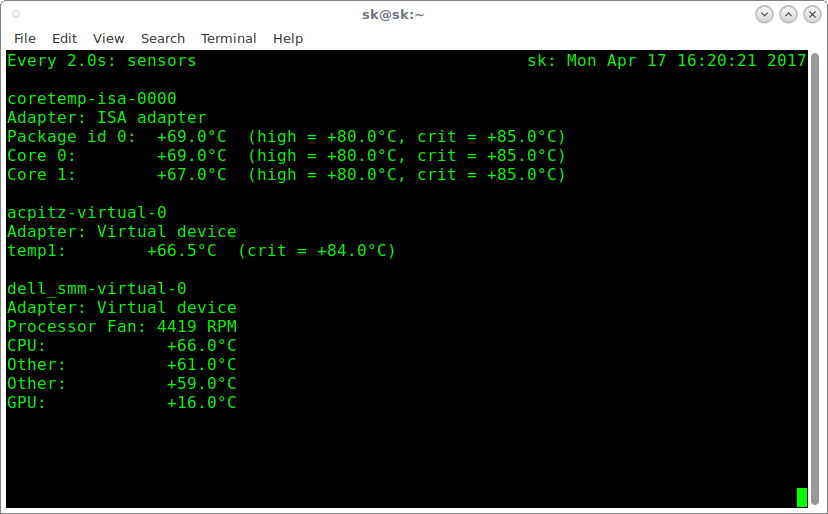


However, Psensor fills a gap, especially on desktops that lack a reliable temperature display in the form of an applet or a shell extension.įurthermore, those want to monitor the remote server they can install psensor-server to fetch Remote Server Temperature and Fan Speed information or values directly on their local system. On one hand, where lots of tools are available for Windows platforms to measure and show the hardware components temperature, Linux systems feel a secluded a little bit. Also, it works perfectly with all desktop environments.

Psensor is a very lightweight tool that can perform all key tasks very smoothly without much configuration effort. Uninstall Psensor Psensor installation on various Linux distros The tool uses the values to draw a meaningful curve of the CPU temperature. Well, this can be done using an open-source tool called psensor, which serves as a front end and polls lm_sensors at definable intervals. And above that reporting in the graph would be the icing on the cake. However, lm_sensors only provide snapshots on the command line where for system monitoring, a GUI tool that logs the temperatures is more practical. Lm_sensors packages are available for almost all Linux distributions, reads the values of the temperature sensors via the System Management Bus (SmBUS) An included command-line tool queries the current temperatures. Whether you are troubleshooting your system, experimenting with overclocking or freshly assembled a new system with some selected components, you should keep an eye on the CPU temperature at least in the test phase. This graphical hardware temperature monitor for Linux various systems such as Ubuntu, Debian, Linux Mint, CentOS, RHEL, and more… In this example, there is only one thermal zone, labeled x86_pkg_temp, which represents the CPU temperature.The Psensor is simple CPU temperature monitoring that uses the systems inbuilt sensors to pull the values and displays them on a graphical user interface. The output shows the last stored temperature for that thermal zone in degrees Celsius. Paste <(cat /sys/class/thermal/thermal_zone*/type) <(cat /sys/class/thermal/thermal_zone*/temp) | column -s $'\t' -t | sed 's/(.).$/.\1☌/' To see what all the thermal zones are referring to, use:.The CPU temperature is in the zone labeled x86_pkg_temp. If you get several thermal zones and different temperatures, execute the following command to see what a single thermal zone represents:įor example, run cat /sys/class/thermal/thermal_zone0/type to see the type of thermal zone 0. The output shows the CPU temperature in the five-digit format. To check the CPU temperature without installing a third-party app, use the following command:Ĭat /sys/class/thermal/thermal_zone*/temp There is a way to use the in-built utilities to check the CPU temperature if you don’t want to use third-party apps.


 0 kommentar(er)
0 kommentar(er)
